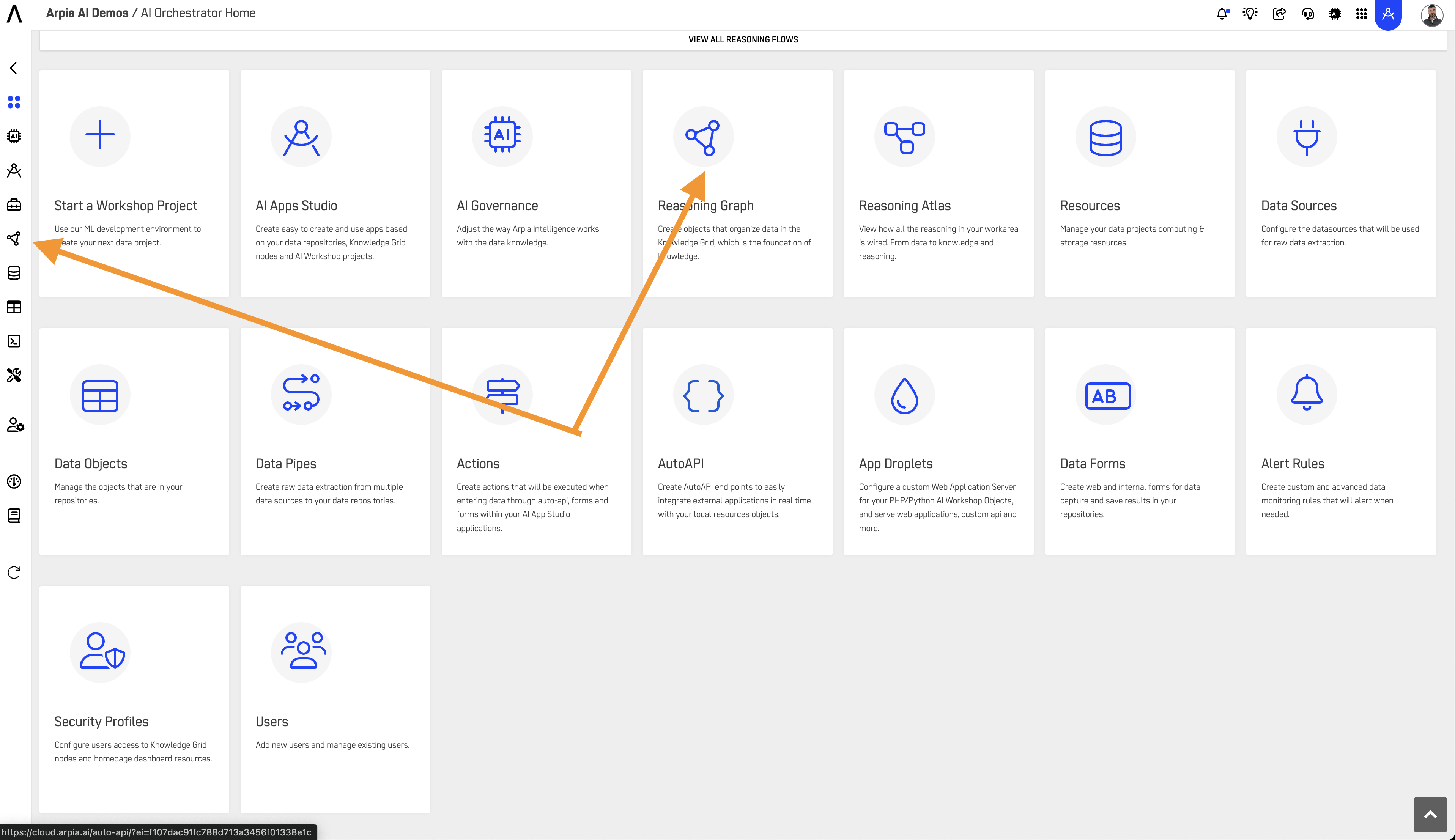Reasoning Knowledge
🧠 Reasoning Knowledge Overview
The Reasoning Knowledge (RK) is a foundational meta-layer that organizes and integrates all data stored across repositories and data objects like tables and views. It acts as the cornerstone of data management, providing a unified source of truth essential for effective governance and data utilization within ARPIA.

📊 Centralized Data Organization
At its core, the Reasoning Knowledge centralizes all data within ARPIA, ensuring consistency and reliability across operations. It serves as the primary repository where data from various sources, including tables and views, is structured and made accessible for:
- Data analysis
- Application development
🛡️ Role in Data Governance
The RK forms the backbone of data governance in ARPIA by:
- Defining, enforcing, and monitoring data policies.
- Supporting compliance efforts by maintaining data integrity.
- Providing a structured framework for managing data through its lifecycle.
🔗 Integration with Knowledge Graph
The Reasoning Knowledge seamlessly integrates with the Knowledge Graph (KG) in ARPIA. This integration allows for managing relationships between data entities, enabling comprehensive insights and facilitating connections across:
- Different data storage locations
- Logical data sources
🌐 Enhancing Data Connectivity
By consolidating data into a unified Reasoning Knowledge, ARPIA promotes better:
- Data connectivity
- Accessibility
This enables users to access and analyze data from multiple repositories and sources, ensuring a holistic approach to data management and decision-making.
🛠️ Strengthening Data Integrity
The structured approach of the Reasoning Knowledge not only enhances data connectivity but also strengthens data integrity. Centralizing data management and governance functions ensures that data across the ARPIA platform remains:
- Consistent
- Reliable
- Effectively utilized
The Reasoning Knowledge plays a critical role in ensuring data is well-organized, connected, and governed, driving ARPIA’s commitment to robust data management and governance.
Updated 3 months ago
